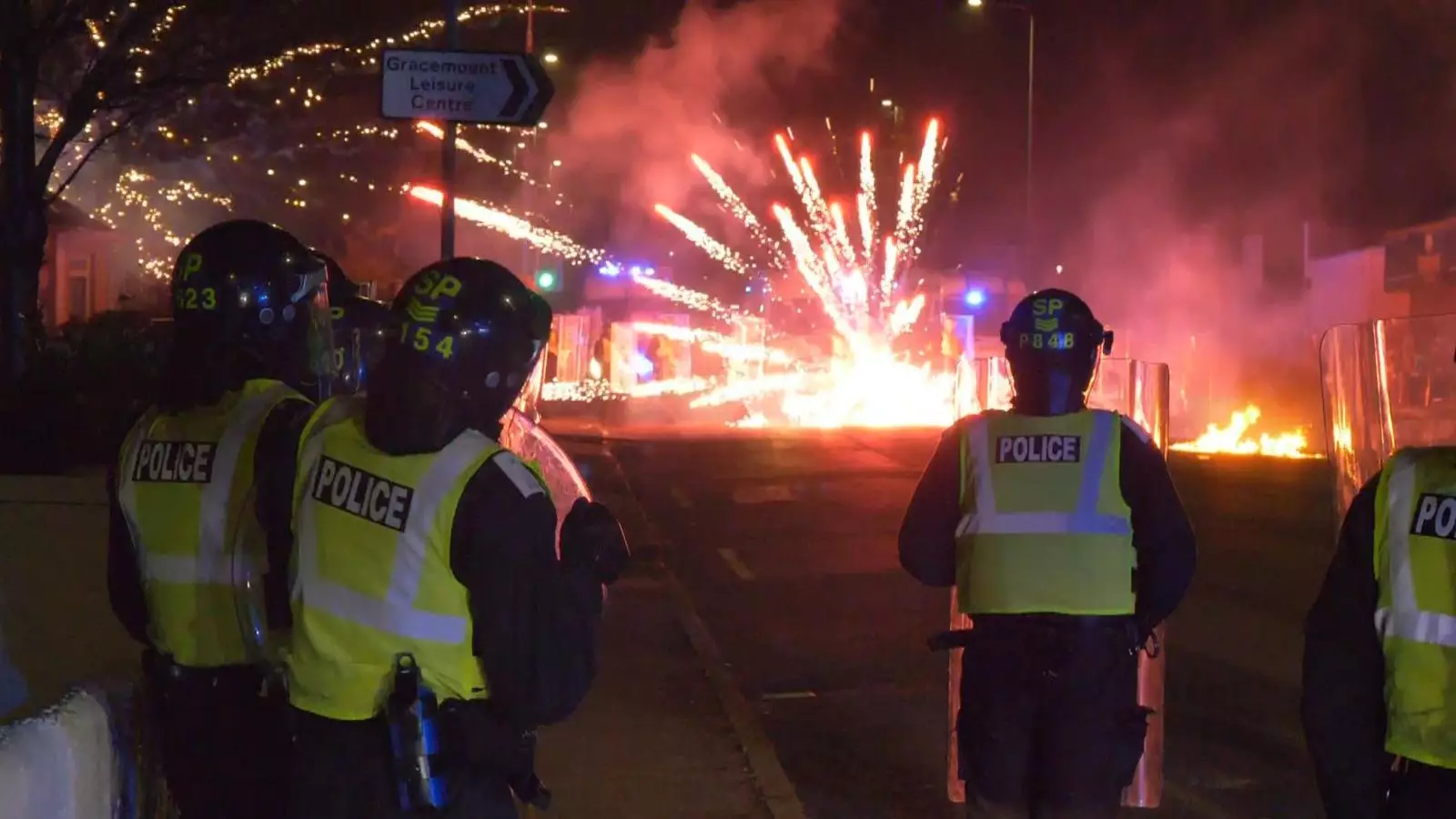Recent nights in Edinburgh have witnessed alarming scenes of disorder, primarily instigated by groups of young individuals engaging in rowdy behavior that escalated to violence. Fireworks, bricks, and bottles were hurled at police officers, highlighting a growing concern about public safety and youth conduct during the Bonfire Night celebrations. Social media platforms have been inundated with footage depicting chaotic scenes across the Sighthill, Niddrie, Gracemount, and Gilmerton neighborhoods, where police found themselves forced to manage potentially dangerous and volatile situations.
In light of the escalating violence, law enforcement enacted additional measures to maintain order. Superintendent Neil Wilson confirmed that officers were responding to widespread disturbances linked to the reckless use of fireworks and projectile objects. In a significant show of force, riot police deployed in full gear, equipped with helmets and shields, were visible on the streets. Notably, the use of a police helicopter under Operation Moonbeam underscored the seriousness of the incidents, reflecting a proactive approach to managing the threat of firework-related crime.
The fallout from these chaotic events includes injuries sustained by law enforcement personnel, with one officer reportedly hurt when a brick crashed through her patrol vehicle’s window. Additionally, the environment in Niddrie led to Lothian Buses suspending all services to ensure the safety of both riders and drivers. The previous incidents occurring on October 31 further illustrate the pattern of violence, raising flags about potential premeditated aggression amongst certain youth groups during periodical celebrations.
As authorities grapple with the rise in firework-related disturbances, new regulations have been established in the form of Firework Control Zones (FCZ) around parts of Edinburgh and Glasgow. These zones, being enforced from November 1 to 10, impose stringent penalties on anyone caught using fireworks within their boundaries, including hefty fines and potential jail time. Such legislative measures aim to strike a balance between celebration and safety, a pressing issue in the face of increasing youth-related chaos.
Interestingly, while Edinburgh struggled with incidents of violence, the traditional Lewes bonfire night celebrations in Sussex proceeded without incident. Local police had cautioned against attendance due to overcrowding concerns, reflecting a significant cultural difference in how communities approach festive observances. Known as the “bonfire capital of the world,” Lewes is renowned for its effigy-burning traditions, featuring figures from politics and current affairs, thereby navigating its own form of social commentary without falling prey to disorder.
The troubling scenes from Edinburgh serve as a wake-up call for both law enforcement and community leaders. Addressing the root causes of such discontent among youths, alongside implementing effective strategies to ensure public safety during celebrations, will be crucial going forward. As cities continue to navigate the intersections of tradition, celebration, and public safety, the repercussions of violence on community cohesion must remain a primary concern.

Leave a Reply